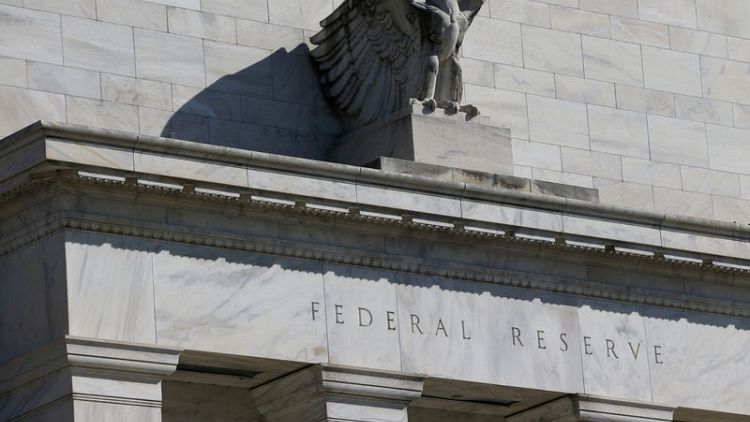By Jonnelle Marte and Trevor Hunnicutt
NEW YORK (Reuters) - The U.S. Federal Reserve's balance sheet could end up between $3.8 trillion (3.1 trillion pounds) and $4.7 trillion by 2025, according to projections collected by the New York Fed.
The regional arm of the central bank, which manages the Fed's massive bond holdings, released the projections in a report on Tuesday drawn from surveys of Wall Street traders.
The New York Fed's report showed the Fed could start buying Treasuries as soon as 2019 or as late as 2025, but the decision would depend on the growth of bank reserves and other Fed liabilities, including currency.
The Fed currently holds about $3.8 trillion in assets, including bonds purchased to stimulate the economy after the 2008 global financial crisis.
After the crisis, the Fed bulked up its holdings by buying Treasuries using bank reserves it created. Eventually, it started letting bonds and reserves decline to bring policy back to normal.
In July, Fed officials decided to end that bond roll-off by August. They made the decision at the same time as they cut rates for the first time in more than a decade, citing inflation that has fallen below their target, the U.S.-China trade war and other economic concerns.
To keep control of rates, officials will eventually have to start buying bonds again and building up bank reserves.
The latest estimates are based on multiple scenarios of how quickly parts of the Fed's liabilities will grow, especially the reserves it holds for banks, currently around $1.5 trillion.
Major investors and traders polled by the New York Fed saw those reserves falling to a range of $1.1 trillion to $1.25 trillion before rising to a range of $1.2 trillion to $1.5 trillion in 2025, according to the report.
(Editing by Jonathan Oatis, Dan Grebler and Richard Chang)



